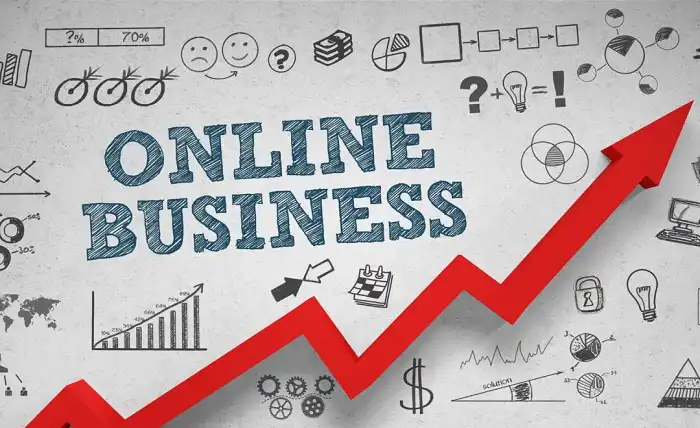How to Start and Grow an Online Business in 2023

Online business is a term that refers to any kind of business that operates on the internet. Online businesses can sell products, services, information, or entertainment to customers around the world. Online businesses can also leverage the power of digital technologies, such as websites, social media, email, mobile apps, etc., to reach and engage their target audience.
Online business is one of the most popular and profitable ways to make money online in 2023. According to Statista, global e-commerce sales reached $4.28 trillion in 2020, and are expected to grow to $5.4 trillion in 2022. Online business also offers many benefits, such as low startup costs, high scalability, flexibility, convenience, and creativity.
But how do you start and grow an online business in 2023? What are the steps, strategies, and skills you need to succeed in this competitive and dynamic market? In this blog post, we will answer these questions and provide you with some useful tips and resources to help you launch and grow your online business.
Step 1: Choose Your Niche and Business Model
The first step to start an online business is to choose your niche and business model. You need to decide what type of online business you want to create and how you want to make money from it. For example, you can choose to create:
- An e-commerce store: This is an online business that sells physical or digital products to customers through a website or an app. You can either create your own products or sell products from other suppliers. You can also choose from different e-commerce models, such as dropshipping, wholesale, subscription, etc.
- A service-based business: This is an online business that provides services to customers through a website or an app. You can either offer your own skills or expertise or hire other professionals to deliver the services. You can also choose from different service-based models, such as consulting, coaching, freelancing, agency, etc.
- An information-based business: This is an online business that sells information or knowledge to customers through a website or an app. You can either create your own content or curate content from other sources. You can also choose from different information-based models, such as blogging, podcasting, video production, online courses, membership sites, etc.
- An entertainment-based business: This is an online business that sells entertainment or fun to customers through a website or an app. You can either create your own entertainment or use entertainment from other sources. You can also choose from different entertainment-based models, such as gaming, streaming, social media, influencer marketing, etc.
Choosing your niche and business model will help you define your target market, your value proposition, your competitive advantage, and your revenue streams. You should choose a niche and business model that match your passion, skills, interests, and goals. You should also research the market demand, competition, regulations, and trends for your chosen niche and business model.
Step 2: Build Your Online Presence
The second step to start an online business is to build your online presence. You need to create a website or an app that showcases your brand identity, values, and culture. You also need to create social media profiles that connect with your audience and promote your online business.
To build your online presence, you need to:
- Choose a domain name: A domain name is the address of your website on the internet. It should be catchy, memorable, and relevant to your niche and business model. You can use platforms such as GoDaddy, Namecheap, or Google Domains to search for and register your domain name.
- Choose a web hosting service: A web hosting service is a company that provides the space and resources for your website on the internet. It should be reliable, secure, and fast. You can use platforms such as Bluehost, HostGator, or SiteGround to compare and choose a web hosting service that suits your needs and budget.
- Choose a website builder or platform: A website builder or platform is a tool that helps you create and design your website without coding. It should be easy-to-use, customizable, and functional. You can use platforms such as WordPress, Shopify, or Wix to find and use a website builder or platform that matches your niche and business model.
- Choose a logo and color scheme: A logo and color scheme are the visual elements that represent your brand identity, values, and culture. They should be attractive, consistent, and distinctive. You can use tools such as Canva, Logo Maker, or Coolors to create and edit your logo and color scheme.
- Create and publish your content: Content is the information and entertainment that you provide to your audience through your website or app. It should be valuable, relevant, and engaging. You can use tools such as Grammarly, Hemingway, or Lumen5 to create and edit your content.
- Create and optimize your social media profiles: Social media profiles are the accounts that you create on social networks such as Facebook, Instagram, Twitter, LinkedIn, etc. They help you connect with your audience and promote your online business. You should create and optimize your social media profiles by using your logo and color scheme, writing a catchy bio, adding a link to your website or app, posting and sharing relevant and engaging content, and interacting with your followers and influencers.
Step 3: Generate Traffic and Leads
The third step to start an online business is to generate traffic and leads. Traffic is the number of visitors who come to your website or app. Leads are the potential customers who show interest in your products or services. You need to generate traffic and leads consistently to grow your online business and increase your sales.
You can use various methods to generate traffic and leads, such as:
- Search engine optimization (SEO): SEO is the process of improving the visibility and ranking of your website or app on search engines such as Google or Bing. SEO helps you attract organic and free traffic from people who are looking for solutions that you offer. You can use tools such as Google Analytics, Google Search Console, or Moz to analyze and optimize your website or app for SEO.
- Pay-per-click (PPC) advertising: PPC advertising is the process of paying for ads that appear on search engines or other websites or apps. PPC advertising helps you attract targeted and paid traffic from people who are interested in your products or services. You can use platforms such as Google Ads, Facebook Ads, or Instagram Ads to create and run PPC campaigns for your online business.
- Email marketing: Email marketing is the process of sending email messages to your subscribers or customers. Email marketing helps you build and nurture relationships with your audience, deliver value propositions, offers, testimonials, case studies, newsletters, etc., and drive them to your website or app. You can use platforms such as Mailchimp, Constant Contact, or HubSpot CRM to create and send personalized emails to your audience.
- Social media marketing: Social media marketing is the process of using social networks to communicate and interact with your audience. Social media marketing helps you increase your brand awareness, engagement, and loyalty, and drive them to your website or app. You can use platforms such as Facebook, Instagram, Twitter, LinkedIn, Pinterest, etc., to post and share content that showcases your brand personality, values, and culture. You can also use features such as stories, live videos, reels, hashtags, etc., to increase your visibility, engagement, and reach.
- Content marketing: Content marketing is the process of creating and distributing valuable, relevant, and engaging content that attracts and educates your audience about your niche and business model. You can use formats such as blogs, e-books, videos, podcasts, webinars, etc., to showcase your expertise, provide useful information, and solve problems for your audience. You can also use platforms such as WordPress, YouTube, Spotify, Zoom, etc., to host and share your content.
Step 4: Convert Leads into Customers
The fourth step to start an online business is to convert leads into customers. Customers are the people who buy your products or services from your online business. You need to convert leads into customers by persuading them that you have the best solution for their needs and wants.
You can use various methods to convert leads into customers, such as:
- Landing pages: Landing pages are the web pages that your leads land on after clicking on your ads, emails, social media posts, etc. Landing pages help you capture the attention and interest of your leads, deliver value propositions, offers, testimonials, case studies, etc., and persuade them to take action, such as signing up for a free trial, downloading a free ebook, booking a free consultation, etc. You can use tools such as Unbounce, Leadpages, or Instapage to create and optimize landing pages for conversions.
- Sales funnels: Sales funnels are the stages that your leads go through before becoming customers. Sales funnels help you guide and nurture your leads through the buyer’s journey, from awareness to consideration to decision. You can use tools such as ClickFunnels, Kartra, or Kajabi to create and manage sales funnels for your online business.




